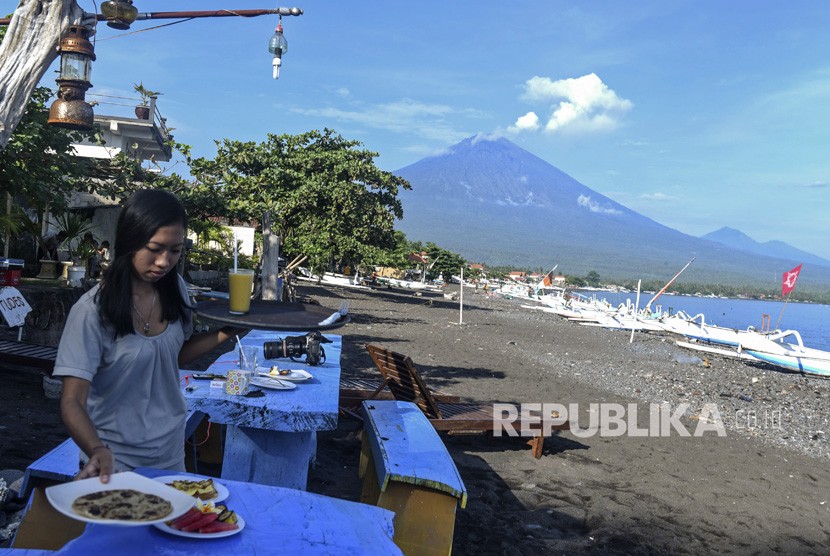REPUBLIKA.CO.ID, CAIRO -- The Energy and Mineral Resources Ministry's Volcanology and Geological Hazard Mitigation Center (PVMBG) reported here on Sunday that the volcanic activity on Mount Agung may decrease.
The volcano had spewed the middle-pressure white smokes which rose by 300 to 1,500 meters for 17 times, the PVMBG head of mitigation, Gede Suatika said at the Mount Agung Observation Post in Rendang village, Karangasem district, Sunday.
"After blowing smokes for 17 times, the volcano erupted and released grey volcanic ashes which rose by 500 to 2,000 m from the crater since 00.01 to 12.00 local time," Suantika noted.
These activities, he explained, have indicated that the number of lava flowing to the crater may drop.
"However, we may degrade the alert status of Mount Agung after observing the amount of ashes spewed from the crater, as well as the number of tremors recorded (by the seismograph)," he emphasized.
During 00.01 to 12.00 am local time, the Volcano Center recorded four low frequency tremors which occurred for 40 to 100 second. Suantika further explained, the local tectonic tremor may indicate that the magma activity has increased inside the crater.
However, the local tectonic activity on the volcano remained low. The Volcano Center recorded one to two times tremors occurred.
"Before lowering the alert status of Mount Agung, we will collect more information for the next one week," he noted.
According to the seismograph, most tremors occurred on the surface of the crater, and no new lava flow seen released from the magma chamber.
"The volcanic ashes released today is generated from the old magma activity five to 10 kilometers beneath the crater," he remarked.
On Nov 30, the volcanic activity on Mount Agung had decreased, but it became active on Dec 7-9, as indicated by the large amount of volcanic ash released from the crater.
"Compared to the eruption on Nov 25-29, the number of ash has decreased now," he stated, while adding, on last month, the volcano had released some 3,000 to 4,000 m column of ashes from the crater.
As the result, in some villages, such as Ban and Tianyar in Karangasem district, the locals found "lapili" or the round-shape volcanic ash which appeared as grains.
"Following the phreatic eruptions, the deformation is still occurring on the volcano. However the volcanic activity now has slightly decreased compared to the records on Nov 25-29," he stressed.


